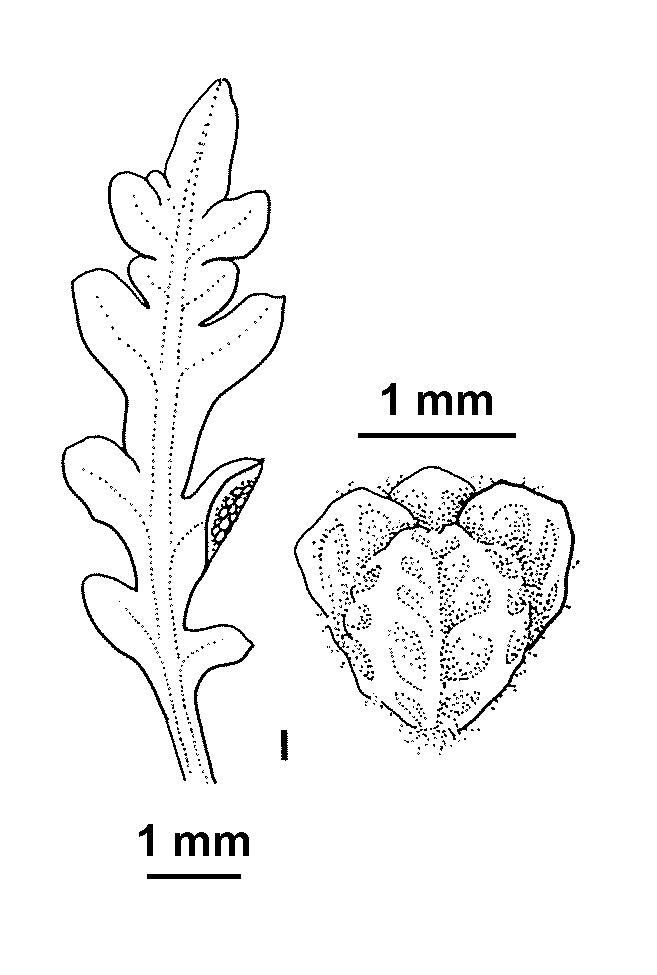Dysphania multifida
(L.) Mosyakin & ClemantsProstrate to suberect, aromatic (resembling turpentine) perennial herb with branches to 1 m long or more, arising from a deep woody taproot. Branchlets with short cottony hairs. Leaves pinnatisect, oblong in outline, to c. 2 cm long, 1 cm wide; segments acute-tipped, sparsely cottony-hairy, margins recurved, lower surface partially covered by yellowish resin droplets. Flowers in small clusters in axils of reduced floral leaves; bisexual flowers with perianth 5-lobed in upper half, stamens 5 with broad membranous filaments; female flowers usually more numerous than bisexual, the perianth ovoid and barely lobed, becoming prominently reticulate in fruit and falling intact; pericarp with fine twisted hairs and resin droplets on upper surface. Seed circular, mostly vertical, red-brown, c. 0.8–1 mm diam. Flowers all year.
Wim, Brid, VVP, VRiv, GipP, OtP, CVU, HSF. Also WA, SA, Qld, NSW. Native to South America. Occurs on heavy clayey and sandy soils in disturbed habitats often in or near rail or trucking yards, or lawns in bayside Melbourne suburbs, but rather uncommon (Wycheproof, Seymour, Melbourne and Geelong).
Walsh, N.G. (1996). Chenopodiaceae. In: Walsh, N.G.; Entwisle, T.J., Flora of Victoria Vol. 3, Dicotyledons Winteraceae to Myrtaceae, pp. 129–199. Inkata Press, Melbourne.
 Spinning
Spinning


